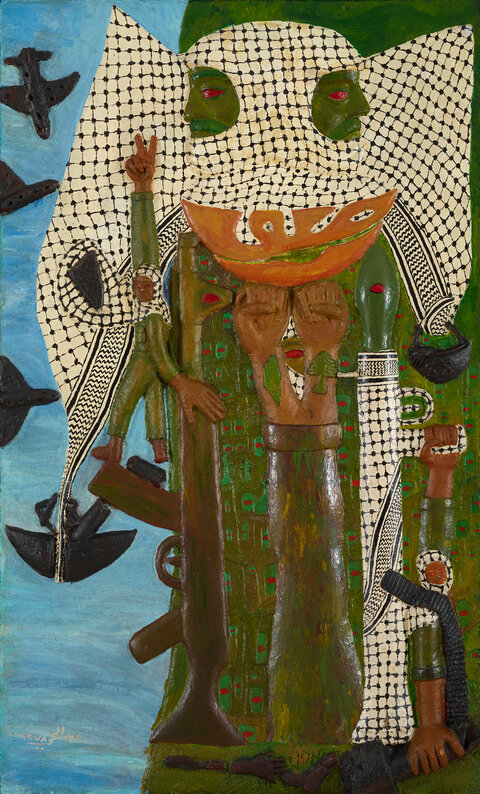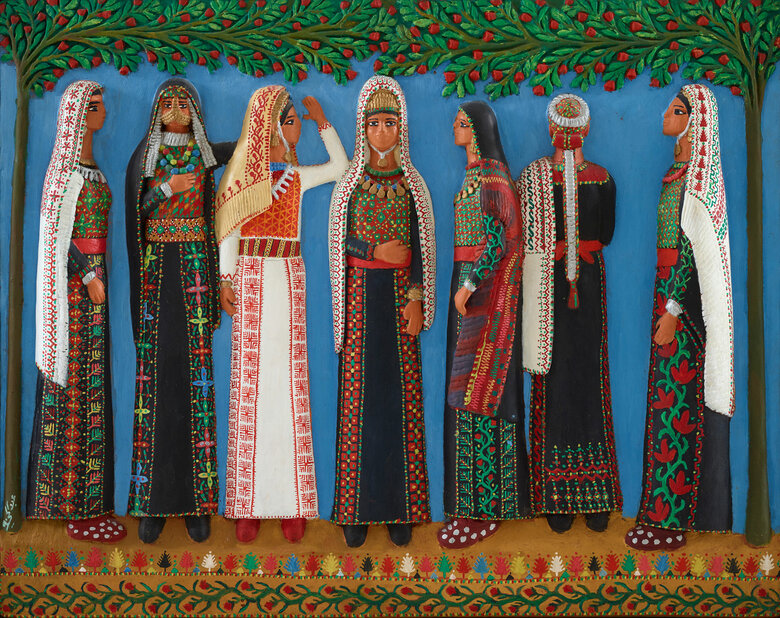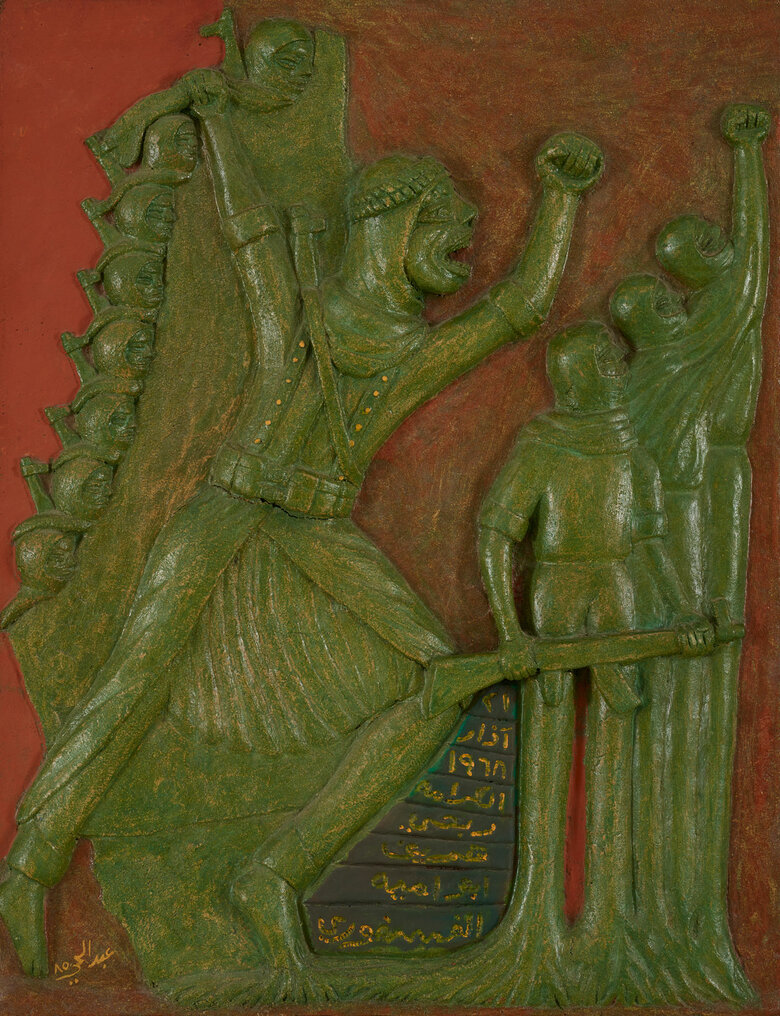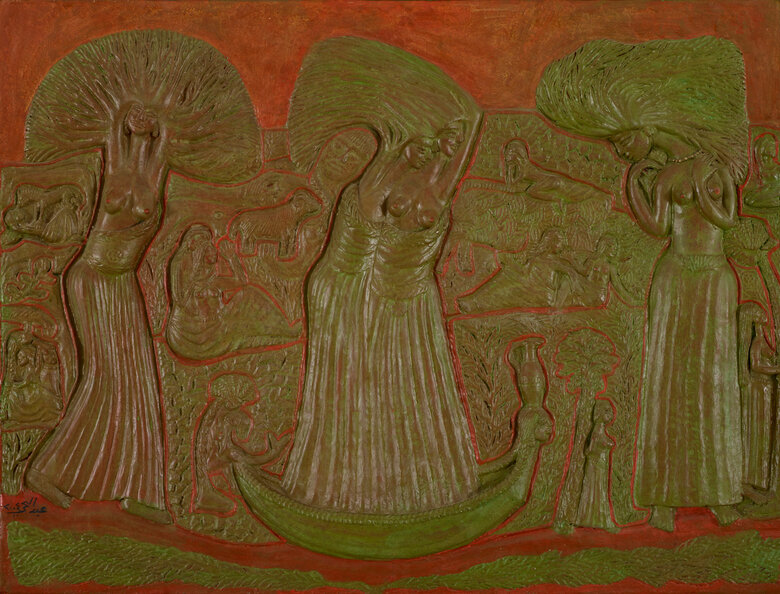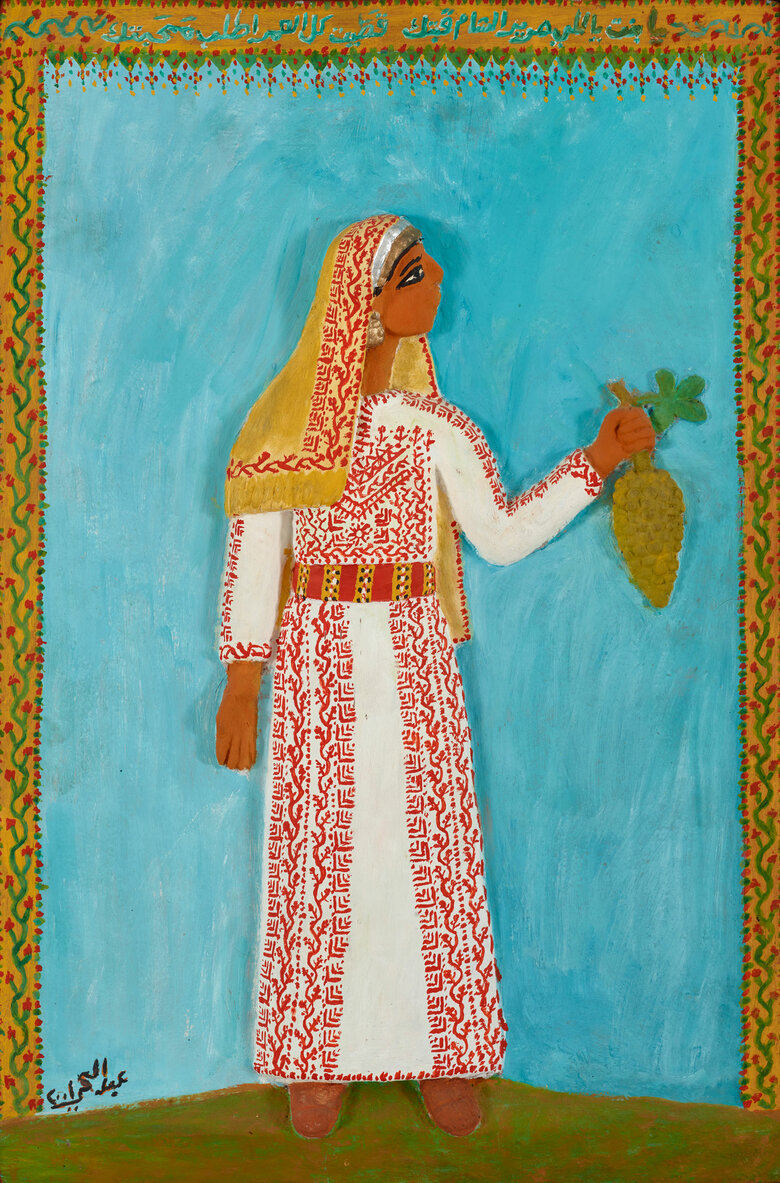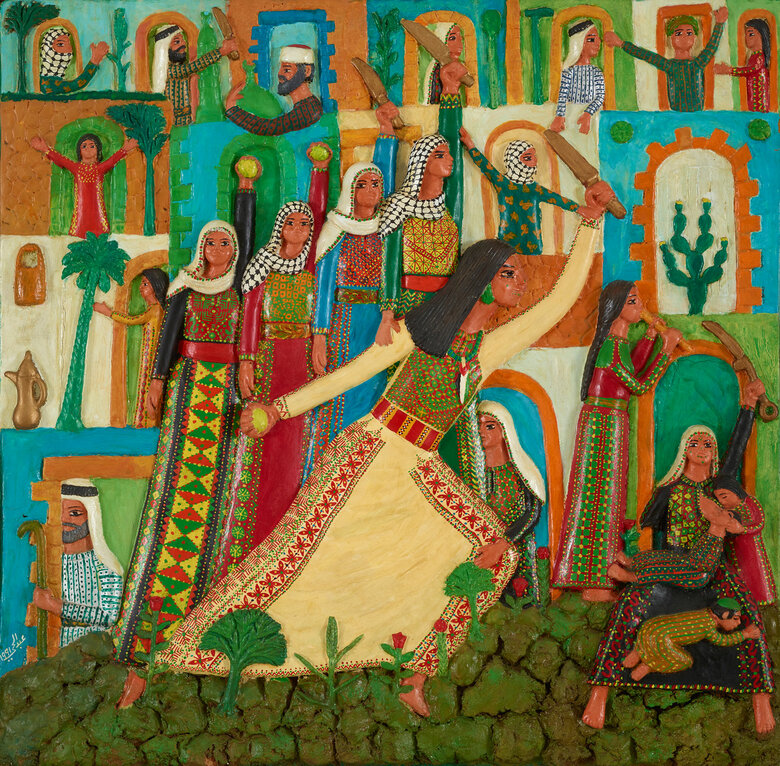Abdulhay Musallam Zarara’s The Fort of Steadfastness, 1978, is constructed with sawdust and glue molded into distinct shapes and then painted with acrylic (predominantly olive green, red, black, white, and blue), giving the work its distinct three-dimensional characteristic and providing it with a sense of dynamism. The piece depicts an elaborate juxtaposition of symbolic representations related to the Palestinian Liberation Organization’s fight against the occupation in the 1960s and 1970s, which the artist was a member of during this period.
The liberatory militarism depicted in this work reflects several recurrent motifs. The kufiya, the ultimate symbol of Palestinian resistance, is wrapped around all the faces of red-eyed freedom fighters, bringing them together under one cause. It then glides onto the rocket launcher on the right, and on the left, one of its tendrils destroys an Israeli fighter plane, while on the other side, it carries the helmet of a killed occupation soldier. The freedom fighter holds up the V sign for victory on the left as his hand, rendered disproportionately, keeps the Kalashnikov close.
Similarly,thefreedomfighterintherightcornerbrandishes the rocket launcher while his other, more giant hand carries the ammunition belt. In the middle is one arm, out of which two defiant fists are raised. On one wrist is a map of Palestine, and on the other, the Lebanese cedar tree, while a freedom fighter peeks from behind.
The onslaught of symbolic iconography across this piece
almost covers up its narrative. At the bottom, almost
dissolved in the shadows and muted by the grandiosity of
the rest of the relief, are the dismembered hands and feet
of Palestinians. The faces of the freedom fighters are stoic,
with only their blood-red eyes staring out and surrounded
by the blood-red eyes of those fighting beside them for
the Palestinian cause or possibly martyred in the course
for freedom. The lack of features represents the singular
sense of purpose that despite all the death and brutality,
they will remain a fort of steadfastness in the face of
annihilation.
Signed and dated in Arabic on the lower right front


